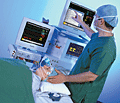According to Hays, specialist recruitment, the acute shortage of qualified workers, which continues to plague the nursing sector, is particularly apparent for A&E, critical care (ITU), theatre, intensive care (ICU) and emergency medicine nurses.
The magnitude of the shortage has however now also spilt over into other areas of nursing jobs such as obstetrician, orthopaedic, anaesthetic and gynaecologist nurses are also highly sought after by the health service. Additionally there is currently a shortage of accident and emergency expertise and a growing requirement for nurses from an emergency medicine background.
“Without a doubt, there is a shortage of nurses in the UK. The available talent from abroad throws an important lifeline given the pressing need for skilled nurses. Around 10% of nurses working in the UK have trained abroad and it is important that skills shortages in the healthcare sector continue to be addressed where possible, using labour from overseas where necessary,” added Simon Hudson, the new Director of Hays Global Resourcing.
The UK has been able to benefit from the global mobility of the nursing sector and tap into the worldwide nursing talent pool to fill its vacancies, however, “The shortage of nurses is not just limited to the UK. Demand exceeds supply across the world, which in turn fuels this cyclical international movement of labour in the nursing profession,” continued Simon.
Many UK nurses are leaving to go and work abroad to destinations such as Canada, Australia, the Middle East and the United States. There are several reasons why nurses from the UK are attracted to overseas destinations, but clearly it is more a case of lifestyle and financial reasons rather than an inability to find a job in the UK.
Nursing in the UK not only offers excellent and varied opportunities to learn valuable skills but also enables individuals to make a positive difference to the lives of others. The NHS encourages applications from people with a wide range of academic and vocational qualifications.
“Going on a work placement or volunteering are excellent routes into the nursing sector and a great way to get a feel for the industry,” said John Faraguna, the newly appointed Managing Director of Hays Health and Social Care. Other ways of entering the industry include cadet schemes and apprenticeships, especially for those with previous NHS experience, for example, clinical support workers and healthcare assistants.
According to recent statistics from the Royal College of Nursing (RCN), one in three community nurses are over 50 and over a fifth of practice nurses are over 55, which adds up to around 200,000 nurses who are due to retire over the next decade.
This represents almost 50% of the worker population and this will leave a massive skills shortfall if these problems are not addressed. This is a worrying prospect at a time when the size of the UK’s elderly population looks set to continue to increase over the coming years, meaning the demand for specialist nurses will continue to grow with it.
“The best solution to this issue is a combination of more effective utilisation and retention of skilled nurses, increased emphasis on training new nurses and, in the short term, increased international recruitment” concluded John,
Â
About Hays Healthcare:
Hays Healthcare is part of Hays plc, the leading global specialist recruitment group. It is market leader in the UK and Australia, and one of the market leaders in Continental Europe. As at 30 June 2008, the Group employed 8,294 staff operating from 380 offices in 28 countries across 17 specialisms.
For the year ended 30 June 2008:
– the Group had revenues of £2.5 billion, net fees of £786.8 million and operating profit before exceptional items of £253.8 million;Â
– the Group placed around 80,000 candidates into permanent jobs and around 300,000 people into temporary assignments;Â
– the temporary placement business represented 49% of net fees and the permanent placement business represented 51% of net fees.Â
Via EPR Network
More Healthcare press releases






